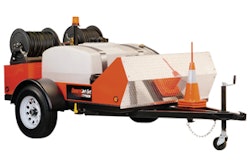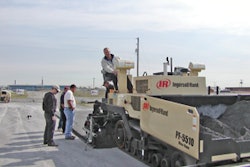Why should you attend or exhibit at a tradeshow? The answer is simple: tradeshows provide multiple opportunities to save time and money by shortening the sales, buying and networking cycle. They help you keep your finger on the pulse of your industry and provide a much-needed opportunity for fun in a professional setting.
The economic and professional benefits of tradeshows are sometimes overlooked because people hesitate to stray from their regular office routine. With a little advanced planning, tradeshows can be a rewarding experience and prove to be even more lucrative than a day at the office. The key to effective participation is for exhibitors and attendees alike to strategically plan how to maximize the benefits offered by tradeshows.
Benefits of participating
According to the Center for Industry Exhibition Research (CEIR), tradeshows are used in the selling process more than any other tool. Research indicates that businesses use tradeshows not only for brand development, but as a proven means of accelerating the sales process. The following statistics explain:
46 percent of decision-makers purchase products while attending a tradeshow.
50 percent of tradeshow leads close with no follow-up sales call.
Of the remaining leads, it only takes 1.4 personal sales calls to close a sale from a tradeshow lead.
Regardless of the industry, today's business professionals are presented with the challenge of perfecting techniques, determining product quality and improving profitability. Finding practical solutions needs to be convenient, efficient and cost effective. By evaluating numerous products and services in a condensed tradeshow environment, you can comparison shop and make educated purchasing decisions to improve and enhance your business.
Studies show that exhibitions play a significant role in the purchasing cycle:
70 percent of expo attendees rely on tradeshows to keep up on important trends and new developments in the industry.
79 percent of expo attendees use tradeshows to decide what products and services to buy.
This is why 85 percent of the exhibitors use tradeshows to introduce new products.
Practical planning
Gaining the most value from an exposition begins with having clear cut expectations and implementing plans that will help accomplish objectives. Both exhibitors and attendees should have objectives and a plan to help maximize participation.
For exhibitors, purchasing space is just the beginning. While attendees have shown some level of interest just by showing up, exhibits need to be inviting and creative to draw in current and prospective customers. Following these guidelines can help:
Define objectives and implement a plan. Understanding the event's attendee profile helps companies establish objectives and implement a plan. For example, if a company wants to concentrate on brand development, show management should be contacted about sponsorships for additional exposure. If a company wants to increase sales, the sales staff should make appointments and send direct mail to prospects.
Determine pre-show promotion and utilize available resources. Letting customers and prospects know about participation is an important step toward tradeshow success. Research shows that 91 percent of attende stop where invited. Direct mail, telemarketing, electronic marketing and the use of free resources provided by show management are just some of the ways to attract attendees to an exhibit.
Review pre-show production materials. Be sure to read show management's exhibitor manual and exhibitor marketing kit to ensure that pre-show marketing opportunities and on-site details are covered. Complete necessary order forms and note all ancillary costs, rules and regulations.
Schedule staff and on-site promotions. A well-staffed booth with a good promotion is critical to tradeshow success. Booth staff should set appointments with customers and prospects to take full advantage of their time in the booth, and booths should offer an appealing promotion to entice new visitors (ie: discounts, free gifts, etc.).
Evaluate the expo's success. Use the momentum and excitement of a tradeshow to follow up with leads obtained at the event and continue to build your brand with post-show meetings, direct mail and telephone calls. Research shows a pattern in purchasing plans after tradeshows; an average of 48 percent of people purchase between one and six months of the expo, while 39 percent plan to buy six or more months after the event, demonstrating why continued communication is so important.
If you're attending a tradeshow, there are ways to maximize your time as well. For starters, arriving at a tradeshow without a plan can be a costly mistake as time out of the office should be spent efficiently. Preparing for a day at a tradeshow saves both time and energy. Knowing how to attend a tradeshow, gather information and turn these efforts into a highly profitable experience requires some planning and organization. Following these guidelines can help:
Determine objectives and establish a plan. Attendees should be sure to check the expo website, review the show program and sort through invitations to chart a strategic course on the exhibit floor. Attendees should also remember to take advantage of the wide variety of product demonstrations and on-floor education that's available at most expositions. It's also important to anticipate unexpected stops.
Wear comfortable shoes and choose literature/premiums carefully. It almost goes without saying, but a comfortable pair of shoes is essential. Also, attendees should be selective about the literature and premiums they choose. By the end of the day, carrying a heavy load can not only be uncomfortable, but can make it difficult to find the relevant business information collected.
Keep the show guide for future reference. The event's show guide can be used throughout the year as a quick reference to exhibiting companies, their products and services.
Recap, remember and review. Attendees should keep a notebook to draft a summary of companies they wish to do business with. Comprehensive notes about observations, product facts and pricing can prove to be helpful when making purchasing decisions.
When exhibitors and attendees take advantage of the significant value associated with tradeshows, many of the lengthy and costly parts of the buying and selling process are eliminated. Dealers, distributors, manufacturers and industry professionals can meet one-on-one with people they might otherwise find too expensive or too time consuming to visit. If saving time and money are something we want to accomplish, then concrete tradeshow plans should be an integral part of every business strategy.


















